
Overview
This article provides an authoritative overview of transformative trends in commerce shopping, specifically targeting direct-to-consumer (DTC) brands. It identifies ten pivotal trends, such as:
- Data-driven conversion rate optimization
- Livestream commerce
- User-generated content
These trends collectively enhance customer engagement, drive sales, and foster brand loyalty within an increasingly competitive market. By understanding and implementing these strategies, DTC brands can position themselves for success and navigate the evolving landscape of consumer expectations.
Introduction
The landscape of direct-to-consumer (DTC) commerce is experiencing a seismic shift, propelled by innovative trends that are redefining brand-consumer engagement. As companies increasingly embrace data-driven strategies, immersive technologies, and social media integration, they unlock new avenues for growth and customer loyalty. Yet, within this transformation lies a critical challenge: how can DTC brands effectively navigate these trends to not only attract but also retain customers in an ever-competitive market?
This article delves into ten pivotal trends reshaping commerce for DTC brands, offering insights into strategies that can lead to sustainable success.
Parah Group: Transforming DTC Brands with Data-Driven Conversion Rate Optimization
Parah Group is at the forefront of transforming DTC companies through innovative, data-driven [[Conversion Rate Optimization](http://parahgroup.com/blogs/10-essential-e-commerce-marketing-services-for-dtc-brands) (CRO)](https://parahgroup.com) strategies. By focusing on consumer behavior and leveraging analytics, Parah Group empowers companies to optimize their resources, leading to significant increases in transaction numbers and average order values.
For example, a $30M apparel company achieved an impressive 35% increase in conversion rates and a 10% rise in revenue per visitor after implementing Parah Group's strategies, which included redesigning their homepage to highlight social proof and optimizing product pricing.
Similarly, Grab Green, a $15M cleaning product company, saw an astounding 80% increase in average order value by testing free shipping thresholds and introducing bundles.
These results underscore Parah Group's holistic approach, ensuring that every aspect of an entity's online presence is primed for growth. This commitment to positions Parah Group as an indispensable ally for companies aiming to thrive in a competitive landscape.
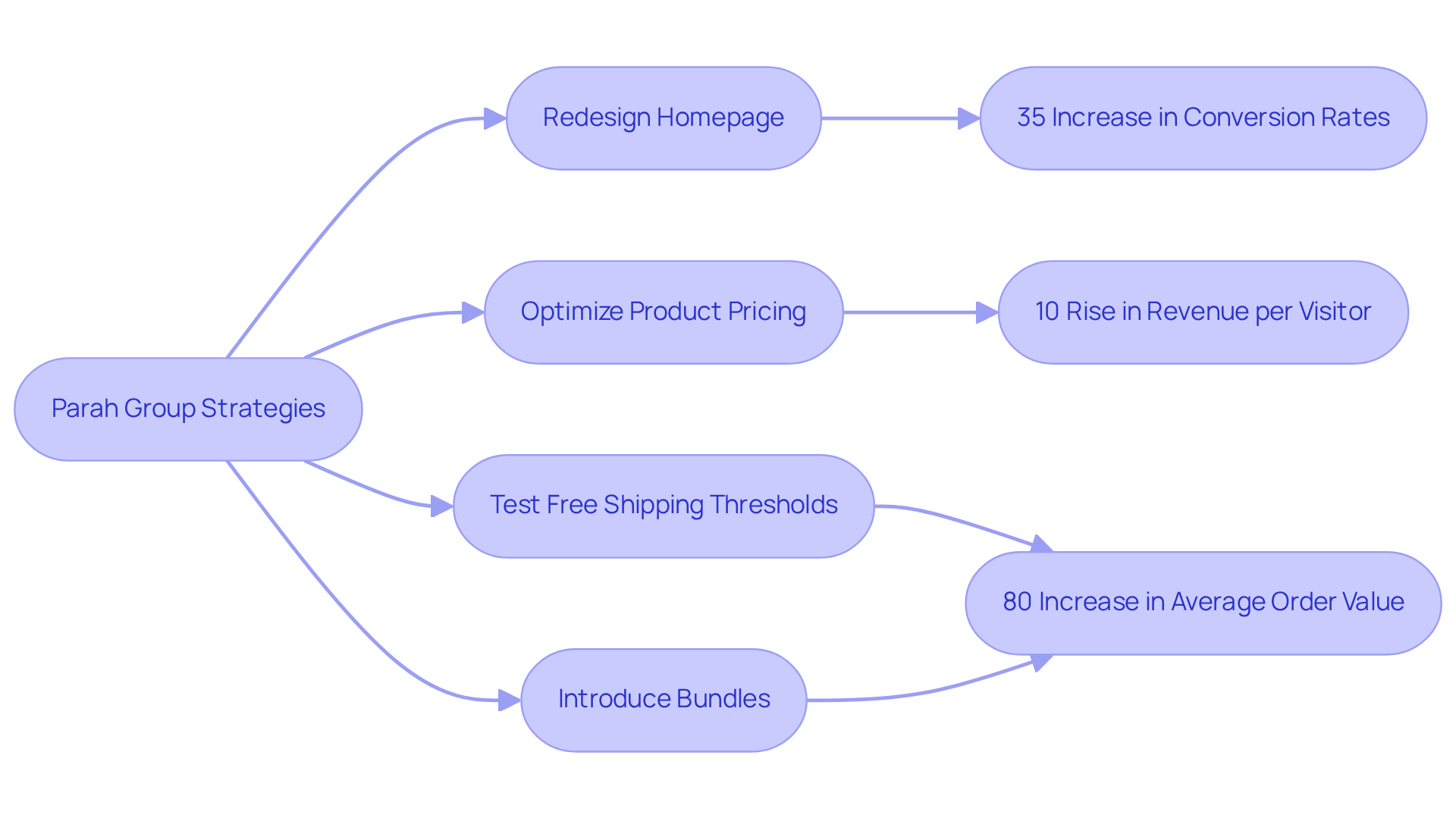
Livestream Commerce: Engaging Consumers in Real-Time Shopping Experiences
Livestream commerce is fundamentally transforming commerce shopping by enabling real-time interactions between companies and customers. This innovative method allows companies to display products live, respond to questions instantly, and instill a sense of urgency among viewers. Notably, sectors such as fashion and beauty can experience conversion rates as high as 70% during live events.
By adopting commerce shopping through livestreams, DTC companies not only enhance customer engagement but also create memorable shopping experiences through real-time product demonstrations and a sense of community; indeed, 67% of shoppers report feeling a sense of belonging during these events.
Furthermore, platforms like Facebook and Instagram are at the forefront of live shopping, making them essential for companies aiming to engage effectively with their audience. This interactive format fosters a deeper connection through commerce shopping between companies and consumers, ultimately resulting in .
Additionally, emphasizing speed and website enhancement is crucial for maximizing sales performance in this evolving e-commerce landscape. Parah Group's established strategies in conversion rate optimization have yielded substantial outcomes, including a 35% boost in conversion rates and a 10% increase in revenue per visitor for companies that implemented customized CRO tactics.
By integrating these strategies with engaging formats like livestream commerce, DTC companies can further enhance their profitability and sustainable growth.
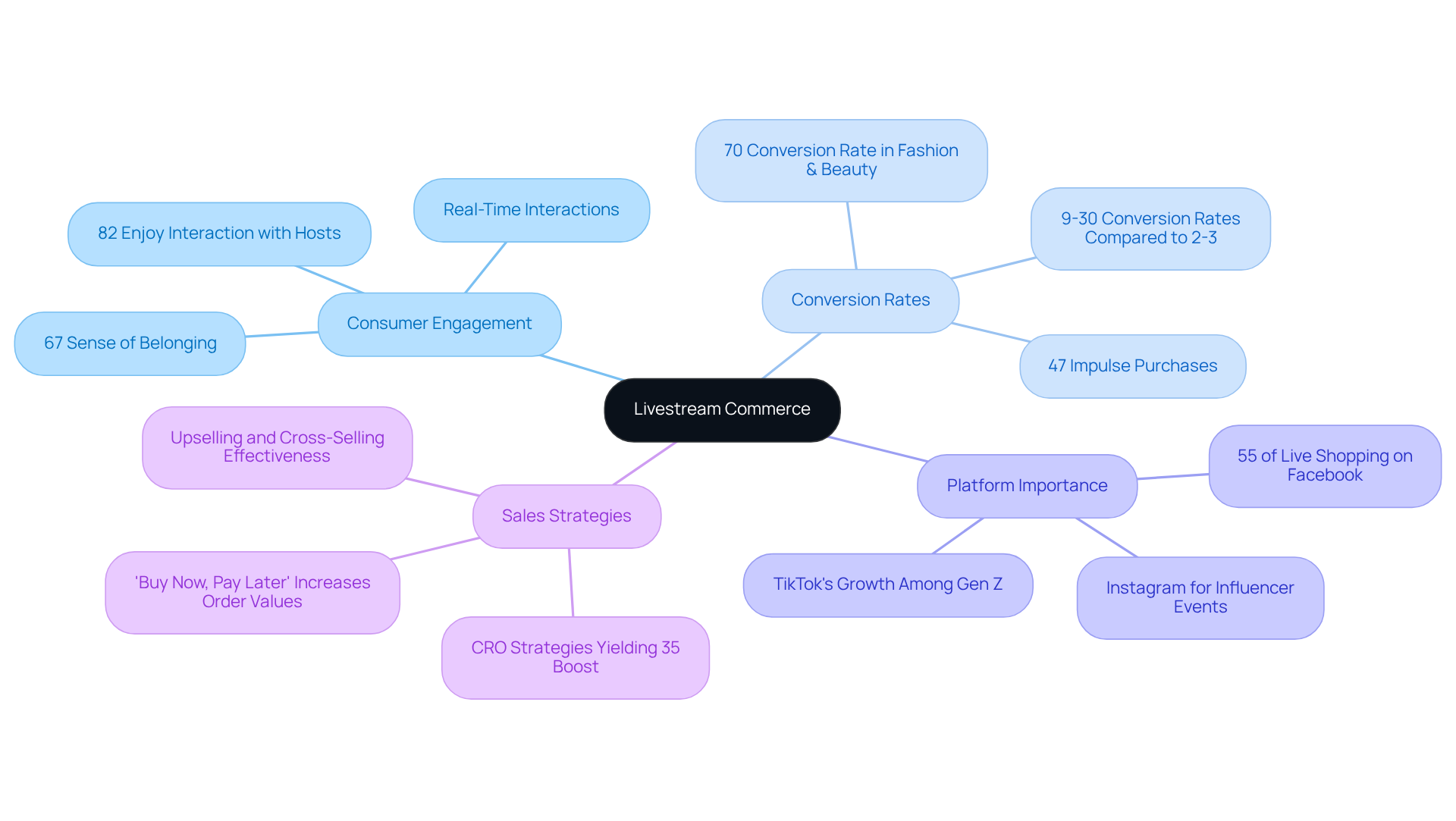
Agentic Commerce: AI-Powered Shopping for Enhanced Consumer Engagement
Agentic commerce harnesses the power of artificial intelligence to deliver highly personalized shopping experiences tailored to individual preferences. By leveraging advanced data analytics and predictive modeling, companies can provide personalized suggestions that resonate with shoppers, effectively streamlining the purchasing journey. This heightened level of personalization fosters stronger and significantly enhances success metrics, establishing it as an essential strategy for direct-to-consumer companies.
Successful implementations of agentic commerce reveal that when companies align their offerings with consumer insights, they can craft compelling shopping experiences that cultivate loyalty and boost sales. For instance:
- Parah Group's collaboration with a $30M clothing label resulted in a 35% increase in conversion rates and a 10% rise in revenue per visitor, achieved through strategic homepage redesigns and optimized pricing.
- A $15M cleaning product company experienced an 80% surge in average order value by introducing free shipping thresholds and bundle offers.
These case studies underscore the effectiveness of conversion rate optimization strategies in enhancing profitability for DTC companies.
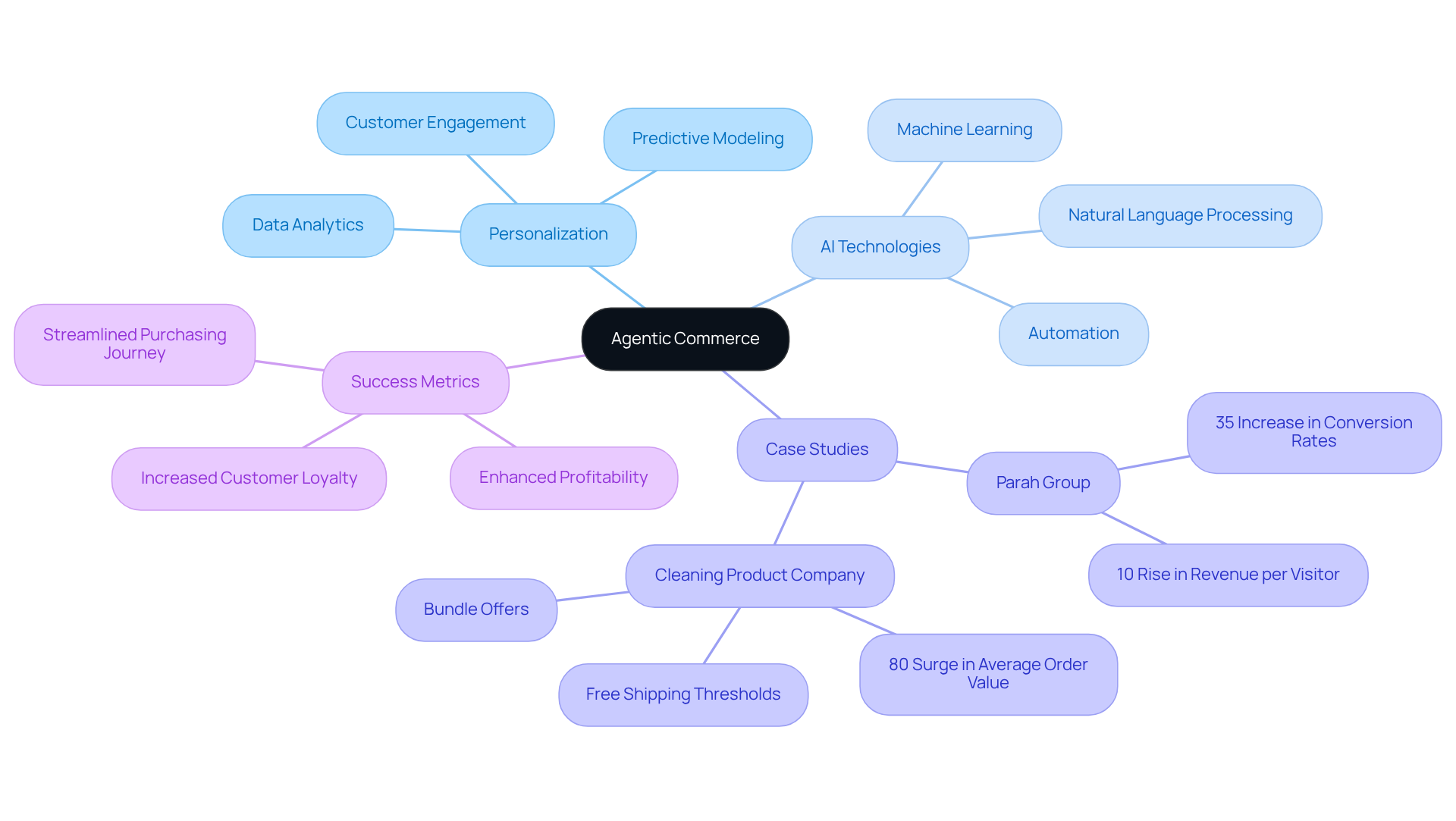
Social Commerce: Integrating Shopping with Social Media Engagement
Social commerce shopping is fundamentally reshaping the shopping environment by seamlessly integrating e-commerce into social media platforms. This innovation allows individuals to effortlessly discover and purchase products within their preferred applications. Direct-to-consumer (DTC) companies can leverage social commerce to significantly enhance their visibility and engage consumers more effectively. By implementing targeted marketing strategies—such as redesigning homepages to showcase social proof, optimizing product pricing, and executing post-purchase upsells—brands can drive conversions and capitalize on the burgeoning trend of social shopping.
Notably, 86% of marketers cite enhanced visibility as a primary advantage of social media marketing, while 64% point to increased sales. As consumers increasingly turn to social media for product discovery—evidenced by 60% of Gen Z discovering new products on these platforms—DTC companies must prioritize social commerce shopping to remain competitive and meet evolving consumer expectations. Furthermore, U.S. social commerce sales are projected to surpass $90 billion by 2025, indicating substantial growth potential. Additionally, shoppable video can boost direct-to-consumer sales by 5-20%, making it a crucial consideration for companies.
With 37% of consumers indicating that social media more frequently, the need for companies to adapt to this trend is clear. Parah Group's established methods in conversion optimization have yielded impressive outcomes, including a 35% increase in conversions and a 10% growth in revenue per visitor for a $30M clothing label. These transformational case studies illustrate how DTC companies can employ innovative conversion rate optimization (CRO) techniques to enhance profitability and drive growth in the competitive landscape of commerce shopping.

Conversational AI: Redefining the Online Shopping Journey with Personalization
Conversational AI is fundamentally transforming the commerce shopping journey by providing personalized interactions through chatbots and virtual assistants. These sophisticated tools not only address customer inquiries but also and guide users effortlessly through the commerce shopping process, significantly enhancing the overall shopping experience.
Direct-to-consumer (DTC) companies that adopt conversational AI can expect substantial improvements in customer satisfaction; research indicates that chatbot-assisted shoppers convert at a remarkable rate of 12.3%, compared to a mere 3.1% without such support. Moreover, chatbots have the potential to recover up to 35% of abandoned shopping carts in commerce shopping by sending timely reminders and offering incentives, a critical advantage in today’s competitive market.
By leveraging these technologies, companies can create a more engaging and efficient commerce shopping environment, ultimately driving higher conversion rates and fostering customer loyalty. Personalized interactions facilitated by chatbots not only elevate user experience but also contribute to a striking 67% increase in sales for businesses that effectively integrate these solutions.
As consumers increasingly expect smart and prompt responses, the implementation of conversational AI becomes essential for DTC companies aiming to thrive in the evolving commerce shopping landscape.
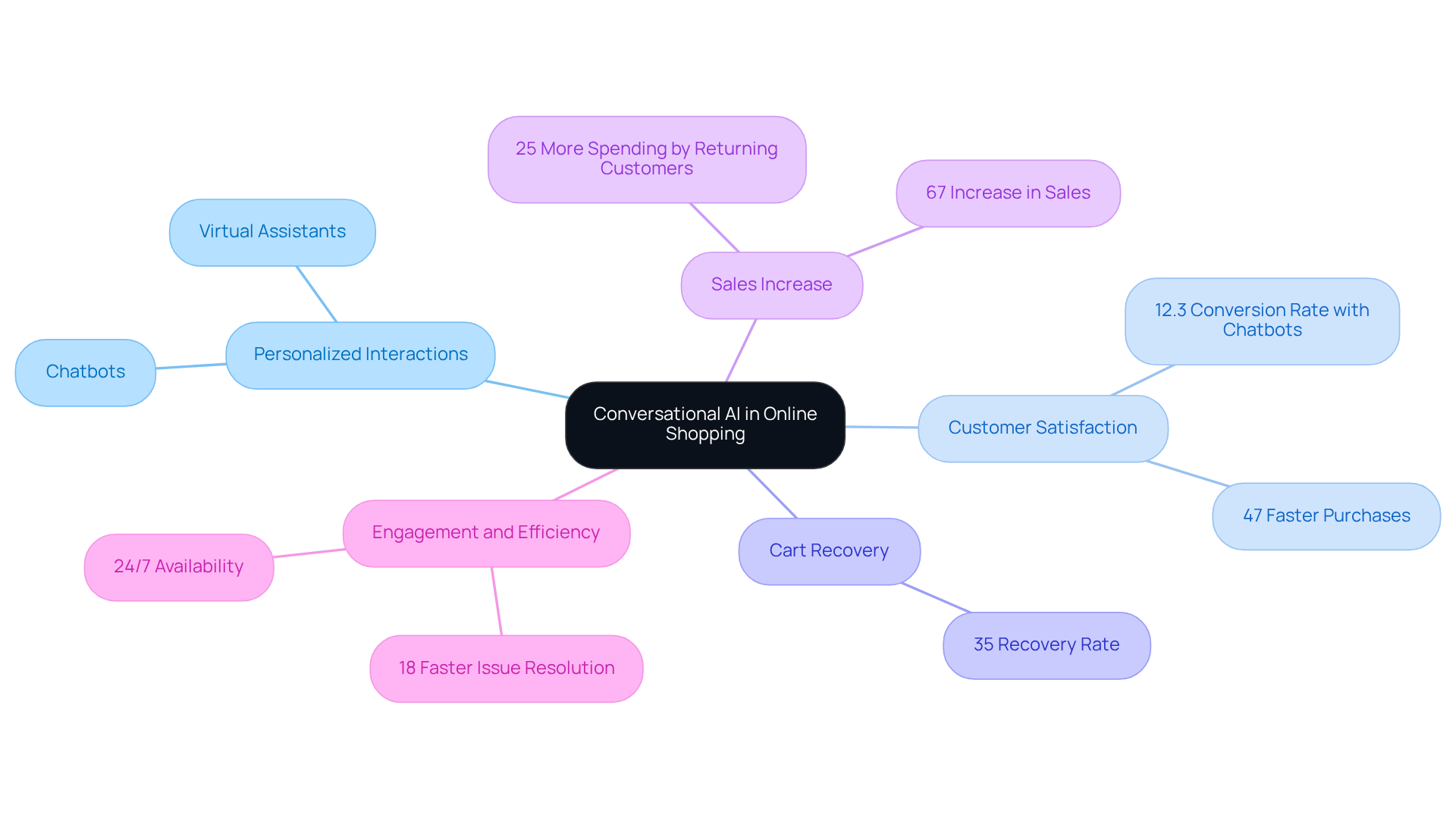
Sustainable Commerce: Meeting Consumer Demand for Eco-Friendly Practices
Sustainable commerce is increasingly essential as consumers actively seek eco-friendly practices from companies. Direct-to-consumer (DTC) companies that embrace sustainability not only enhance their reputation but also connect with a growing demographic of environmentally conscious shoppers. By integrating sustainability into their business models, these brands can distinguish themselves in a competitive landscape and drive conversions through ethical consumerism.
Notably, sustainable products have captured a 17% market share and are growing at a rate 2.7 times faster than their conventional counterparts. Furthermore, 62% of U.S. adults often look for sustainable products, indicating a significant shift in purchasing habits. This trend is not merely a fleeting phase; 55% of consumers are on companies that positively impact society and the environment.
As DTC companies prioritize eco-friendly initiatives, they enhance their appeal and position themselves for long-term success in a market increasingly defined by sustainability. Importantly, companies such as the $30M clothing firm that Parah Group collaborated with improved their success percentage by 35% and income per visitor by 10% through conversion rate optimization (CRO) strategies that emphasized social proof and refined pricing.
Such proven strategies can amplify the impact of sustainable practices, driving both profitability and customer loyalty.
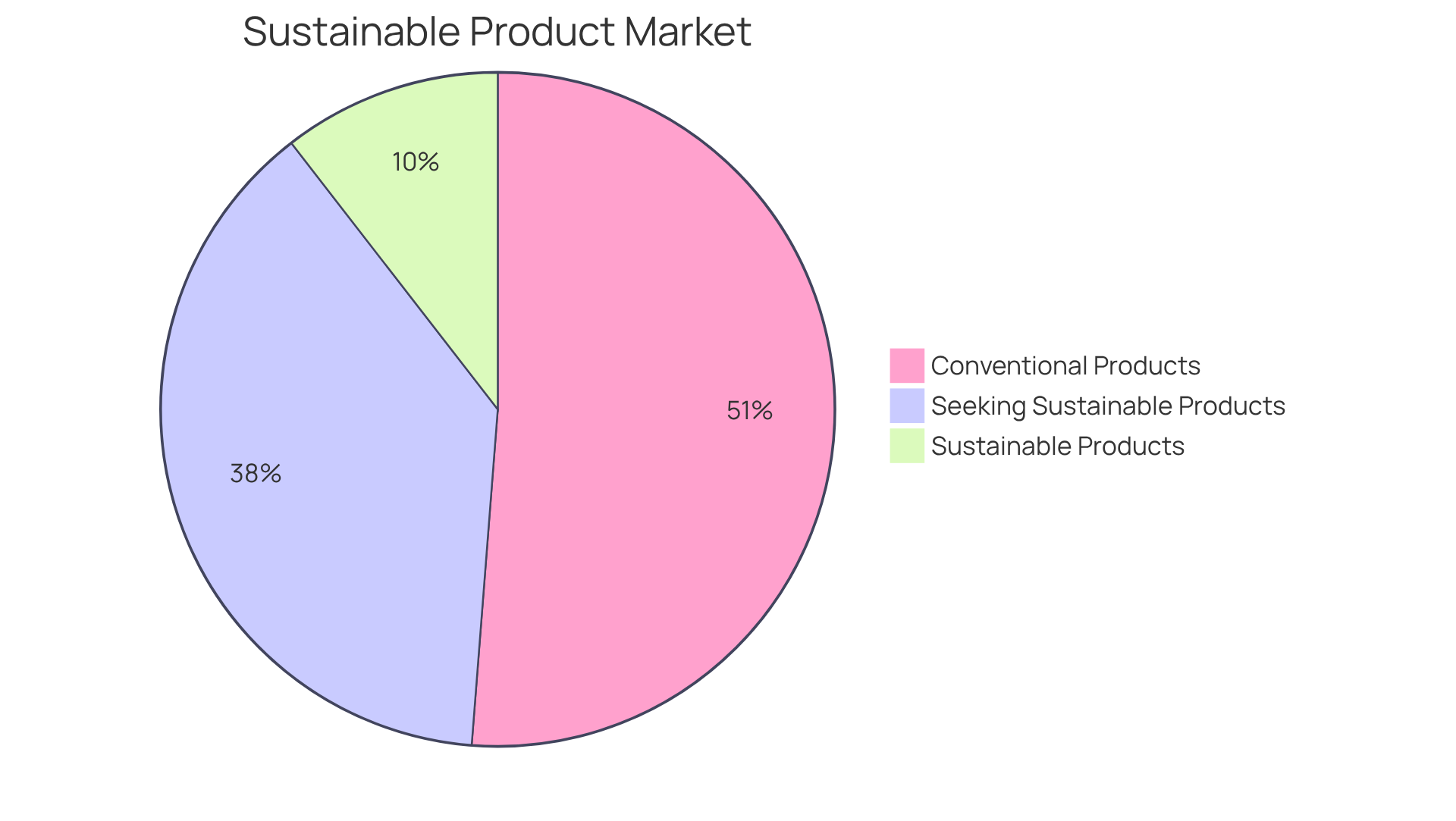
Omnichannel Strategies: Creating Seamless Shopping Experiences Across Platforms
Omnichannel approaches are essential for crafting seamless shopping experiences across various platforms, enabling individuals to engage with companies consistently, whether online or offline. By integrating multiple channels, DTC companies can significantly elevate customer satisfaction and loyalty, which in turn drives higher conversion rates. Notably, companies that embrace omnichannel strategies report an impressive 9.5% annual revenue growth, underscoring the effectiveness of delivering a cohesive shopping experience.
Furthermore, 87% of shoppers initiate their journeys through digital channels, emphasizing the necessity for companies to connect with individuals in their current environments. A prime example is Nike, which has witnessed e-commerce sales surpass 30% of its business following the implementation of omnichannel enhancements. This strategic integration not only bolsters customer trust but also fosters repeat purchases, as shoppers who interact across multiple channels are valued at 30% more over their lifetime compared to those who engage through a single channel.
Ultimately, creating seamless shopping experiences across platforms transcends being a mere trend; it represents a striving to succeed in a competitive marketplace.
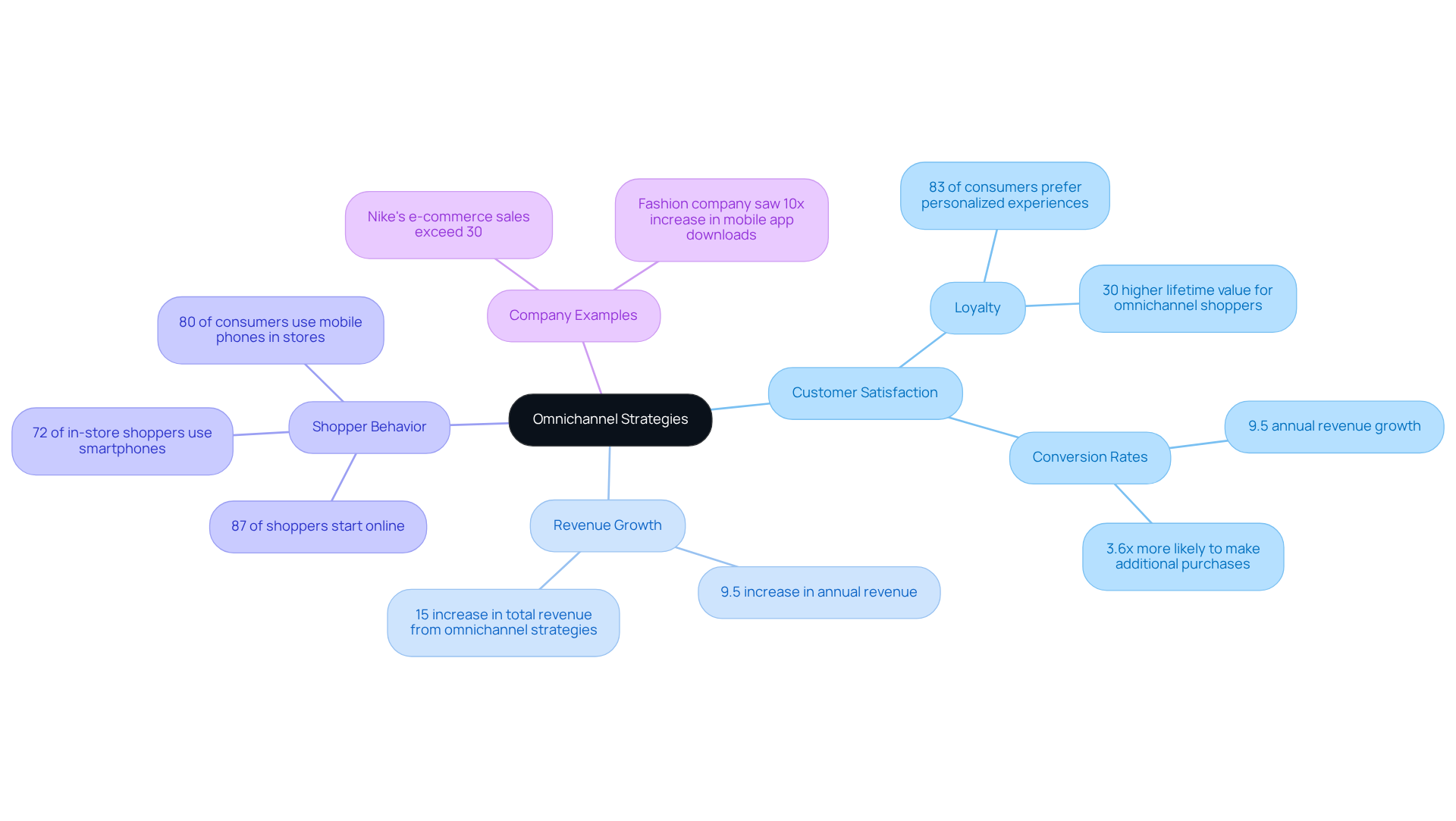
Augmented Reality: Enhancing Online Shopping with Immersive Experiences
Augmented reality (AR) is revolutionizing online shopping by creating immersive experiences that empower shoppers to visualize products within their own environments. This technology significantly boosts user engagement, with studies revealing that products featuring AR content can achieve up to 94% higher than those without. By enabling customers to interact with products virtually, AR enhances purchasing confidence, resulting in informed decisions and reduced return rates—by as much as 30% in certain instances.
Direct-to-consumer (DTC) companies that integrate AR into their shopping experiences not only distinguish themselves in a competitive landscape but also cater to the preferences of tech-savvy shoppers. For example, brands like IKEA and Sephora have effectively implemented AR solutions, allowing customers to visualize furniture in their homes and try on makeup virtually, respectively. These implementations have led to increased customer satisfaction and loyalty, as consumers feel a stronger connection to the products they are considering.
Moreover, the application of established optimization techniques can further amplify the effectiveness of AR. For instance, Parah Group's case studies illustrate that:
- Refining product pricing
- Gamifying the shopping experience
- Executing post-purchase upsells
These strategies can significantly enhance average order value (AOV) and customer acquisition. A case analysis of a clothing label revealed a 35% increase in purchase rates, while Grab Green achieved an 80% boost in AOV through similar strategies. Brands that adopt these strategies alongside AR can cultivate engaging and personalized shopping experiences, which are essential for driving conversions. As Ben Houston observed, "Over 90% of American shoppers already use AR or are open to using it for shopping, and 98% of those who have tried AR found it helpful in making purchase decisions." By embracing AR and effective conversion rate optimization (CRO) strategies, DTC companies can forge a deeper connection with their audience, ultimately enhancing their overall profitability. Explore AR solutions to create immersive shopping experiences that elevate customer engagement and drive sales.

Subscription Models: Driving Consumer Loyalty and Predictable Revenue
Subscription models are increasingly adopted by DTC companies, delivering a dual benefit: consistent revenue streams and enhanced customer loyalty. By offering products or services on a subscription basis, brands not only bolster customer retention but also create a predictable income flow. This model effectively addresses buyer preferences for convenience and value, with 70% of individuals indicating that discounts and cash-back offers serve as significant incentives for participation. Furthermore, businesses embracing subscription strategies can witness substantial revenue growth, as companies utilizing value metrics aligned with customer outcomes experience revenue growth 1.6 times faster than those relying on standard pricing.
The impact of subscription services extends beyond immediate sales; they foster stronger relationships with users. For instance, companies implementing loyalty programs alongside subscriptions can significantly enhance engagement, as 71% of consumers are likely to recommend subscription products they find appealing. Moreover, the subscription economy has witnessed remarkable growth of 435% over the last decade, underscoring its effectiveness in driving customer loyalty and retention.
Effective subscription strategies enhance revenue predictability by enabling companies to estimate income with greater accuracy. With 70% of in SaaS originating from existing customers, the focus on retaining subscribers becomes paramount. Brands that prioritize transparency, easy cancellation, and flexible management options are better positioned to sustain customer satisfaction and loyalty, ultimately leading to sustainable growth in the evolving commerce shopping landscape.
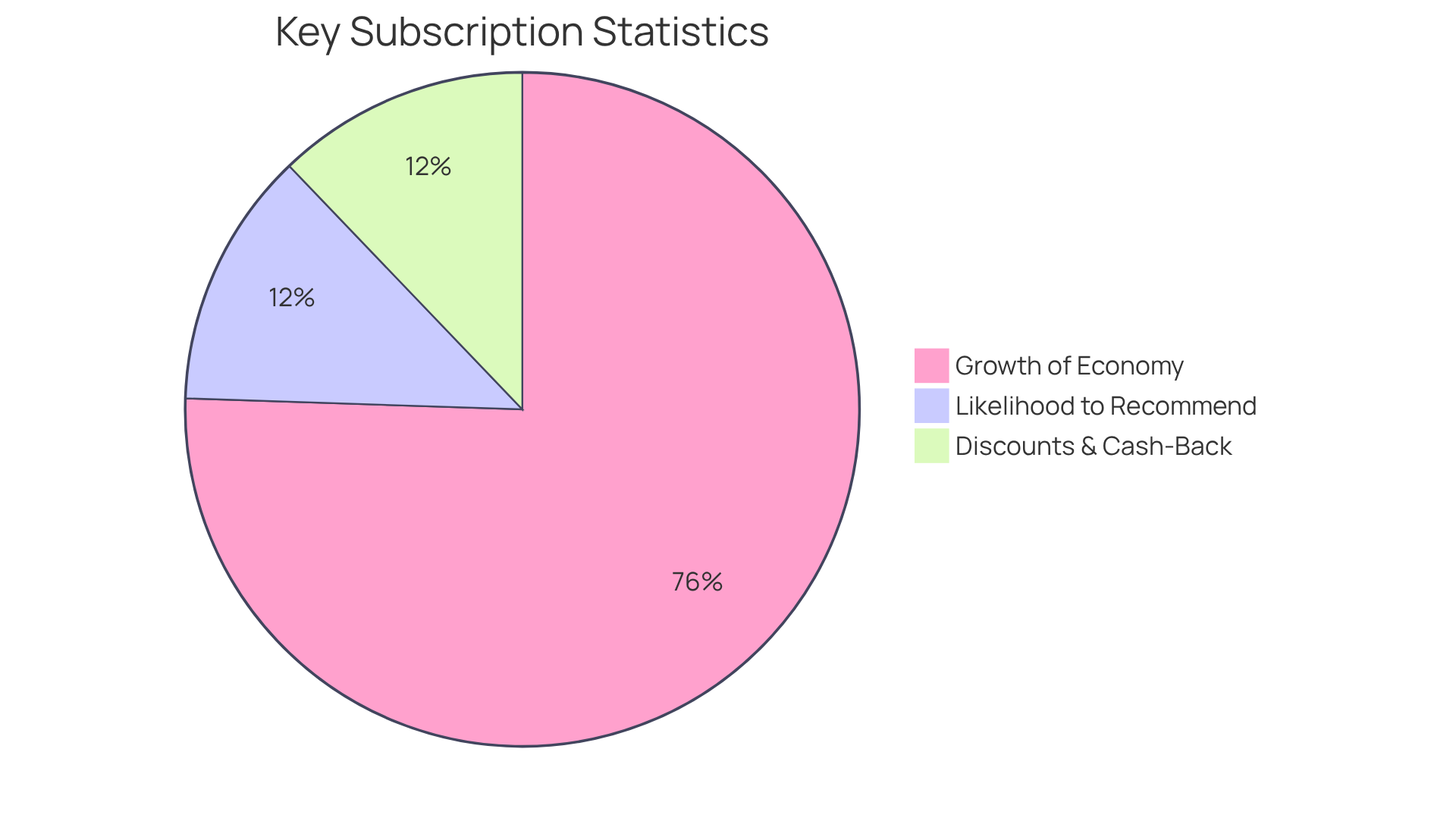
User-Generated Content: Building Trust and Authenticity in E-Commerce
User-generated content (UGC) has emerged as a vital element in e-commerce, significantly enhancing for direct-to-consumer companies. By prominently showcasing customer reviews, testimonials, and user-generated content, companies can enhance their credibility and influence buying choices. A staggering 93% of consumers find UGC helpful when making purchasing decisions, and 85% trust UGC more than brand-generated content. This trust is crucial, as 88% of shoppers regard online reviews as reliable as personal recommendations.
Moreover, UGC fosters a sense of community, encouraging potential customers to engage with the company. Campaigns that include UGC can result in a 22% rise in average order value and a 29% greater web performance compared to those that do not. Successful instances are plentiful, with companies utilizing UGC to craft genuine narratives that connect with consumers, ultimately boosting higher engagement and sales. For instance, Parah Group's case studies indicate that companies employing strategic UGC, alongside optimization techniques, experienced notable enhancements in their performance metrics. One apparel brand achieved a 35% increase in conversion rates by redesigning their homepage to highlight social proof, including customer reviews, which directly contributed to their revenue growth.
As the landscape of digital marketing evolves, integrating UGC into marketing strategies is not just beneficial; it is essential for building lasting relationships with customers. Brands should actively encourage customers to share their experiences to generate more UGC, as this not only enhances trust but also complements broader conversion rate optimization efforts aimed at maximizing profitability. To effectively implement UGC, consider creating dedicated campaigns that invite customers to showcase their experiences with your products, fostering a community that drives engagement and sales.
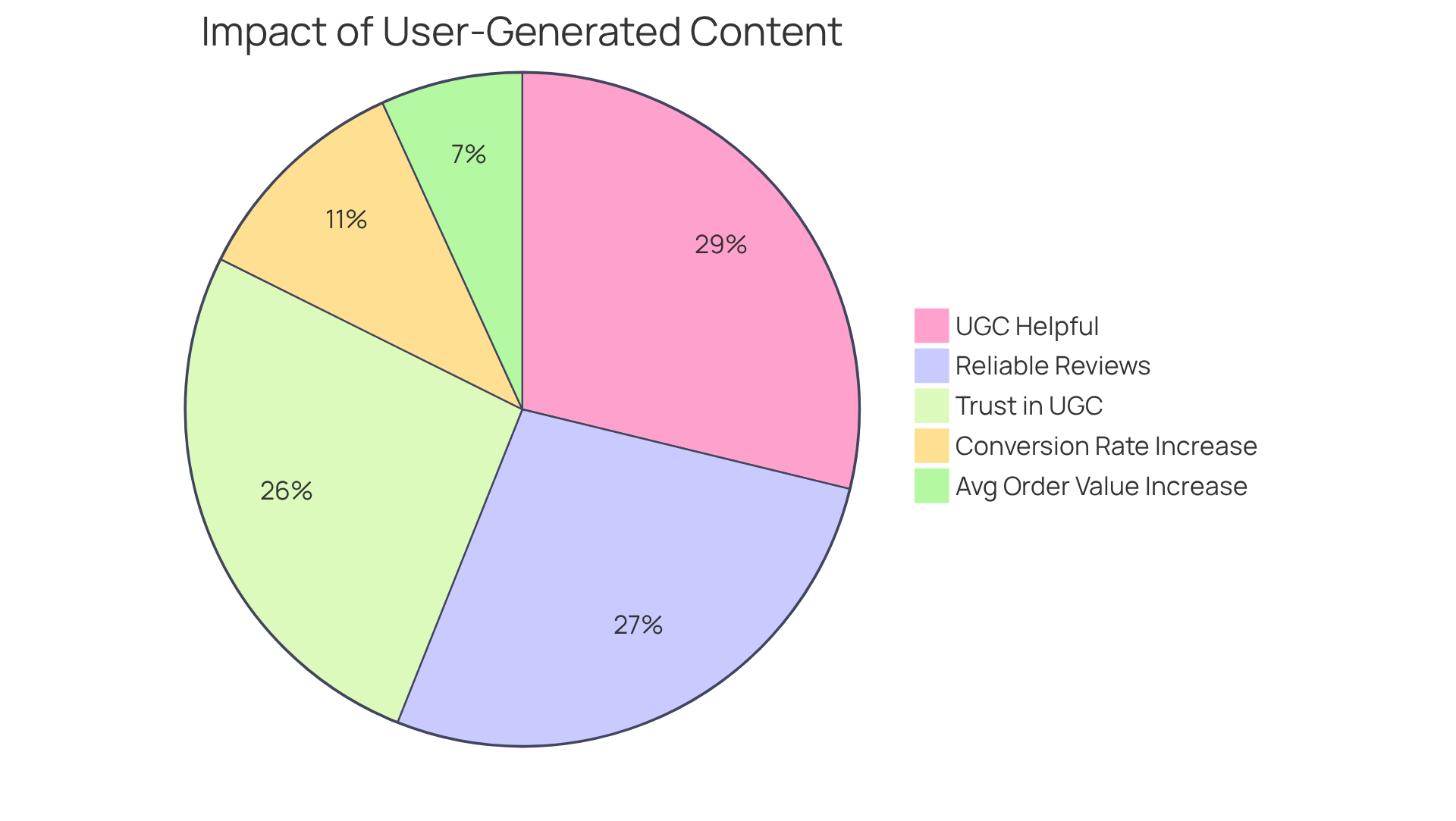
Conclusion
The evolution of commerce shopping for direct-to-consumer (DTC) brands is marked by innovative trends that are reshaping the landscape. Notably, data-driven conversion rate optimization strategies by Parah Group and the rise of livestream commerce underscore the necessity of adapting to consumer preferences and leveraging technology to enhance the shopping experience. By embracing these transformative strategies, DTC brands can significantly increase their profitability while cultivating lasting relationships with their customers.
Key insights from the article reveal the effectiveness of various approaches, including:
- Agentic commerce that utilizes AI for personalized shopping
- Social commerce that integrates e-commerce with social media
- Sustainable practices resonating with eco-conscious consumers
Furthermore, omnichannel strategies and augmented reality are redefining how brands engage with their audience, while subscription models and user-generated content foster loyalty and trust. Each of these trends emphasizes the imperative for DTC companies to innovate and adapt within a competitive marketplace.
As the commerce landscape continues to evolve, it is crucial for DTC brands to stay ahead of these trends. Investing in technology and adopting strategies that prioritize consumer engagement, personalization, and sustainability will not only enhance customer satisfaction but also drive long-term growth. Embracing these transformative trends is essential for brands aiming to thrive in the dynamic world of commerce shopping, ensuring they remain relevant and competitive in an ever-changing environment.
Frequently Asked Questions
What is Parah Group and what do they specialize in?
Parah Group specializes in transforming direct-to-consumer (DTC) companies through innovative, data-driven Conversion Rate Optimization (CRO) strategies, focusing on consumer behavior and analytics.
How does Parah Group's approach benefit DTC companies?
By optimizing resources based on consumer behavior insights, Parah Group helps companies achieve significant increases in transaction numbers and average order values.
Can you provide examples of companies that benefited from Parah Group's strategies?
Yes, a $30M apparel company saw a 35% increase in conversion rates and a 10% rise in revenue per visitor after implementing Parah Group's strategies. Similarly, Grab Green, a $15M cleaning product company, experienced an 80% increase in average order value by testing free shipping thresholds and introducing bundles.
What is livestream commerce and how does it impact consumer engagement?
Livestream commerce allows real-time interactions between companies and customers, enabling live product displays and instant responses to questions, which enhances customer engagement and can lead to high conversion rates.
What are the benefits of livestream commerce for DTC companies?
DTC companies benefit from enhanced customer engagement, memorable shopping experiences, and a sense of community, with 67% of shoppers feeling a sense of belonging during these live events.
Which platforms are essential for livestream commerce?
Platforms like Facebook and Instagram are crucial for implementing live shopping and effectively engaging with audiences.
What is agentic commerce and how does it enhance consumer engagement?
Agentic commerce uses artificial intelligence to create highly personalized shopping experiences by leveraging data analytics and predictive modeling, which fosters stronger customer engagement and improves sales metrics.
What outcomes have companies achieved through agentic commerce?
Companies that implemented agentic commerce strategies, such as a $30M clothing label and a $15M cleaning product company, reported a 35% increase in conversion rates and an 80% surge in average order value, respectively.
How do conversion rate optimization strategies contribute to profitability for DTC companies?
By aligning offerings with consumer insights and optimizing online experiences, conversion rate optimization strategies enhance profitability and support sustainable growth for DTC companies.
FAQs











